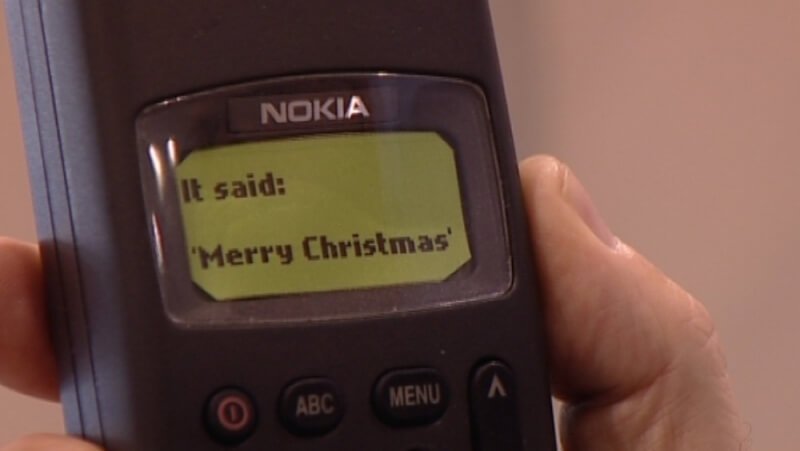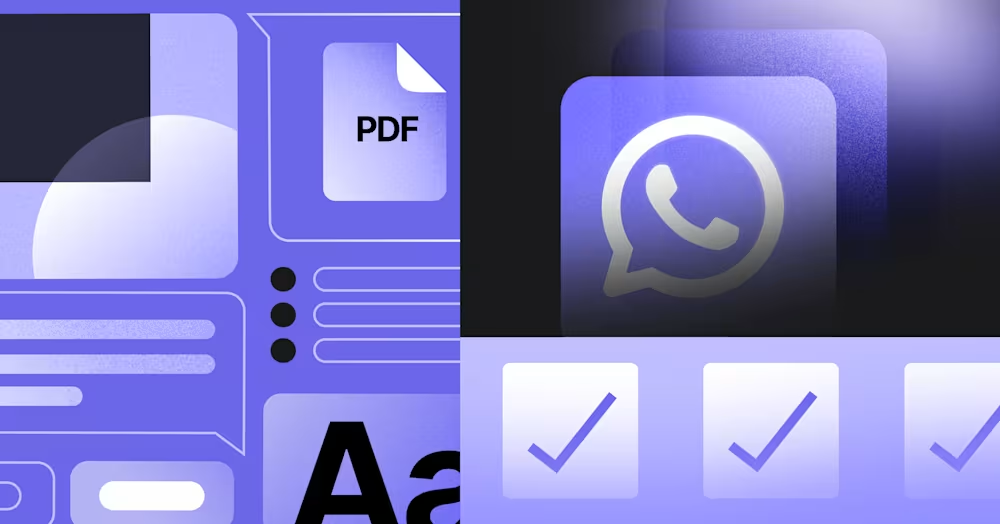
เทมเพลตข้อความ WhatsApp: คู่มือการใช้งานพร้อมตัวอย่าง 13 รายการ
ธุรกิจไม่สามารถส่งข้อความ WhatsApp ได้หลังจาก 24 ชั่วโมง เว้นแต่จะใช้เทมเพลตข้อความ WhatsApp เรียนรู้วิธีการจัดรูปแบบและส่งข้อความเทมเพลตพร้อมตัวอย่าง

RCS Messaging เป็นหนึ่งในโครงการที่ Google ผลักดันให้เกิดความสับสนมากที่สุด RCS Messaging คืออะไร? RCS จะมาแทนที่ SMS หรือเปล่า? RCS Messaging มีอยู่จริงหรือไม่? บทความนี้จะอธิบายเกี่ยวกับ RCS Messaging Protocol อย่างละเอียด เรากำลังหารือกันว่า RCS Messaging จะกลายเป็นความล้มเหลวครั้งใหญ่หรือจะเป็นอนาคตของการส่งข้อความ

ในการเข้าใจ RCS Messaging อย่างเต็มที่ คุณจะต้องรู้เกี่ยวกับ SMS และวิธีการทำงานของมันเล็กน้อย
ในการเข้าใจ RCS Messaging ให้ชัดเจน ควรทำความคุ้นเคยกับ SMS และเทคโนโลยีที่เกี่ยวข้อง. บริการข้อความสั้น (SMS) มีอยู่มานานกว่า 30 ปีแล้ว ความสำเร็จที่โดดเด่นตลอดอายุการใช้งาน ได้แก่ การนำระบบการส่งข้อความผ่านระบบโทรศัพท์ และการทำให้เป็นมาตรฐานระดับโลกมาตรฐานแรกสำหรับการส่งข้อความ
ในปีพ.ศ. 2525 มีการเสนอ SMS ให้กับระบบทั่วโลกสำหรับการสื่อสารเคลื่อนที่ (GSM) โดยมีคุณค่าที่สามารถส่งข้อความผ่านระบบโทรศัพท์ได้ ได้รับการนำออกสู่ตลาดในปีต่อๆ มา โดยมี SMS แรกคือ Merry Christmas ซึ่งส่งโดย Neil Papworth ถึง Richard Jarvis เพื่อนร่วมงานของเขา
บริษัทต่างๆ ทั่วโลกต่างมองว่า SMS เป็นโซลูชันการสื่อสารที่มีประสิทธิผล จึงนำ SMS มาใช้ ทำให้กลายเป็นรูปแบบการสื่อสารที่พบเห็นได้ทั่วไปบนโทรศัพท์มือถือในปัจจุบัน 97% ของผู้ใช้สมาร์ทโฟนในปัจจุบันส่งหรือรับข้อความ มีการส่งข้อความ SMS ประมาณ 15 ล้านข้อความต่อนาที ซึ่งเพิ่มขึ้นเป็น 22 พันล้านข้อความต่อวัน
คุณค่าที่ SMS มอบให้กับธุรกิจคือความเรียบง่ายและความเป็นสากล ปัจจัยทั้งสองประการนี้ดึงดูดให้บริษัทต่างๆ ใช้ SMS เพื่อสื่อสารกับลูกค้า ปัจจุบัน ธุรกิจต่างๆ สามารถดูแลลูกค้า รับคำติชม ให้รางวัลแก่ความภักดี และส่งโปรโมชั่นได้ ถือเป็นการเปลี่ยนแปลงครั้งสำคัญสำหรับธุรกิจและลูกค้า เนื่องจากพวกเขาไม่จำเป็นต้องกำหนดวันที่และเวลาเฉพาะเจาะจงในการสื่อสาร นอกจากนี้การสื่อสารไม่มีการผูกมัดตามเวลาทำการสำนักงาน
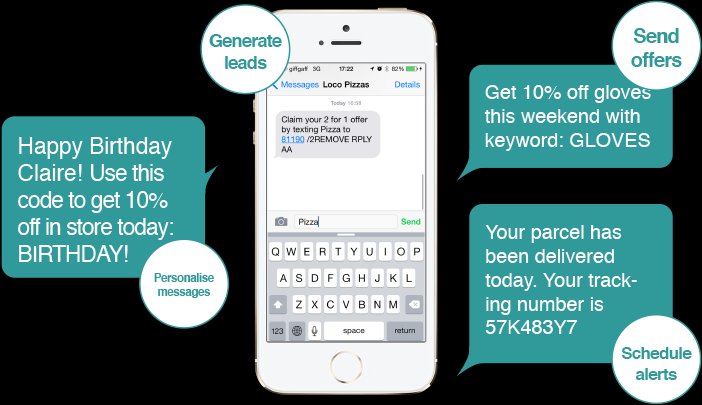
แม้ว่าความนิยมของอีเมลจะเพิ่มสูงขึ้นอย่างมากนับตั้งแต่มีการส่ง SMS เข้ามา แต่ก็ไม่ได้ทำให้ความนิยมของ SMS ลดลงแต่อย่างใด SMS ยังคงมีข้อได้เปรียบเหนืออีเมลบางประการ อีเมลจะถูกเปิดเพียง 20-30% ของเวลาเท่านั้น ในขณะที่ SMS จะถูกเปิดประมาณ 98% ของเวลา และ 90% จะถูกเปิดภายใน 3 วินาที สำหรับกรณีการใช้งานบางกรณี เช่น การตรวจสอบสิทธิ์แบบสองปัจจัย (2FA) SMS ถือเป็นมาตรฐานและดูเหมือนว่าจะไม่มีทีท่าว่าจะหายไปในเร็วๆ นี้
เหตุผลสำคัญประการหนึ่งก็คือ ต่างจากแอปส่งข้อความสมัยใหม่ ที่ผู้บริโภคต้องส่งข้อความแรกถึงธุรกิจก่อนจึงจะเริ่มการสนทนาได้SMS อนุญาตให้บริษัทต่างๆ ส่งข้อความถึงบุคคลไหนก็ได้ ตราบเท่าที่มีหมายเลขโทรศัพท์อยู่
ลักษณะเฉพาะเดียวกันที่ทำให้ SMS แพร่หลายไปทั่วโลกและสากลทำให้โปรโตคอล SMS ล้าสมัยเมื่อเทียบกับรูปแบบการส่งข้อความรูปแบบอื่น
SMS จำกัดความยาวไม่เกิน 160 ตัวอักษร ดังนั้นจึงไม่สามารถส่งข้อความยาวๆ ได้ รวมถึงสื่ออย่างรูปภาพ วิดีโอ และไฟล์ต่างๆ ด้วย แม้ว่าผู้ให้บริการจะพยายามเพิ่มความสามารถนี้โดยใช้มาตรฐานบริการการส่งข้อความมัลติมีเดีย (MMS) แต่ความพยายามเหล่านี้ก็ไม่เคยทำให้ SMS แพร่หลายไปทั่วเลย
ข้อเสียที่สำคัญอีกประการหนึ่งคือผู้ใช้ปลายทางไม่สามารถรับ SMS ได้เมื่อไม่ได้ใช้การเชื่อมต่อเซลลูลาร์ ด้วยโลกที่ก้าวสู่ระดับโลกมากขึ้น แอพส่งข้อความที่สามารถส่งและรับผ่าน Wi-Fi ทำให้ความเสี่ยงจากค่าบริการโรมมิ่ง SMS เป็นสิ่งที่ผู้บริโภคไม่พึงปรารถนาอีกต่อไป
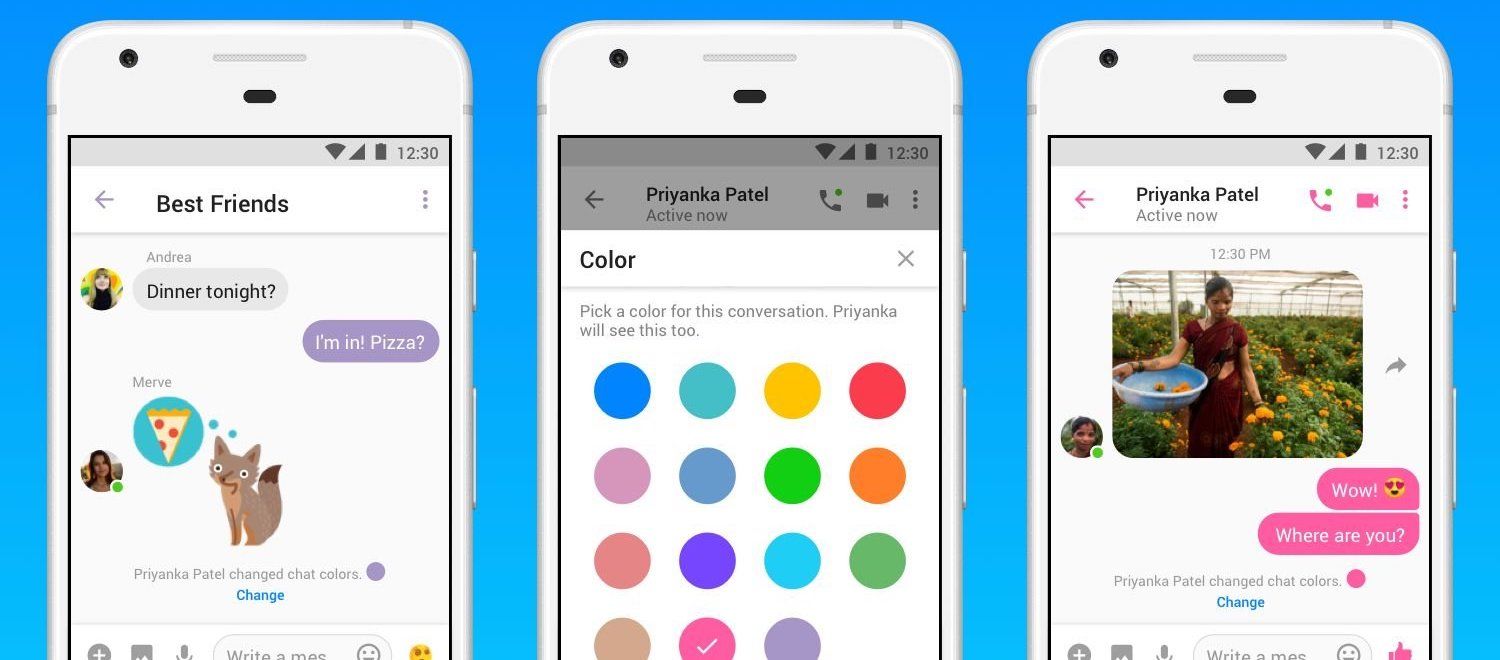
จุดอ่อนของ SMS ทำให้บริการแอปการส่งข้อความเพิ่มขึ้นอย่างมากทั่วโลก ด้วย Facebook Messenger, WhatsApp & WeChat กลายมาเป็น 3 แอปส่งข้อความยอดนิยมทั่วโลก ในขณะที่ แอปเล็กๆ กลุ่มหนึ่งก็ยังคงต่อสู้อย่างดุเดือดกับแอปยักษ์ใหญ่ในกลุ่มของตัวเอง
แม้ว่าแอปการส่งข้อความทั้งหมดเหล่านี้จะมีคุณสมบัติที่แตกต่างกันและตอบสนองความต้องการของกลุ่มเป้าหมายทางภูมิศาสตร์หลัก แต่ก็ยังมีชุดคุณสมบัติที่เหมือนกันซึ่ง SMS ไม่มี ซึ่งรวมถึงการแชร์รูปภาพ การแชทแบบวิดีโอ การแชทแบบกลุ่ม และสติ๊กเกอร์ ซึ่ง SMS ไม่มี
ในยุคที่ แม้ว่า Mark Zuckerberg จะยืนยันว่าการแชร์กำลังย้ายจากโซเชียลมีเดียไปยังการส่งข้อความส่วนตัว การแข่งขันในโลกการส่งข้อความทำให้ความสามารถในการแชร์ meme กับเพื่อนกลายเป็นสิ่งที่จำเป็นมากกว่าที่จะเป็นสิ่งที่ดีที่จะมี
สำหรับธุรกิจแล้ว มีมที่น่ารังเกียจนั้นถือเป็นเรื่องรอง การเพิ่มขึ้นของแอปการส่งข้อความได้สร้างปัญหาสำคัญสองประการสำหรับธุรกิจ โดยเฉพาะธุรกิจระดับโลก ประการแรกคือภูมิทัศน์ที่กระจัดกระจาย การย้ายจาก SMS โปรโตคอลเดียวไปเป็นแอปการส่งข้อความหลายแอปนั้นเป็นเรื่องที่ยุ่งยาก ประการที่สองคือการสมัครรับข้อความ บริษัทแอปส่งข้อความต่าง ๆ ต้องการให้ผู้บริโภคปลายทางส่งข้อความแรกก่อน ซึ่งหมายความว่าการรวบรวมอีเมลและหมายเลขโทรศัพท์เมื่อชำระเงินไม่เพียงพออีกต่อไป
เปลี่ยนการสนทนากับลูกค้าให้เป็นการเติบโตทางธุรกิจโดยใช้ respond.io. ✨
จัดการการโทร การสนทนา และอีเมลในที่เดียว!
ตอนนี้เราได้พูดคุยเกี่ยวกับประโยชน์และข้อจำกัดของ SMS เมื่อเปรียบเทียบกับแอปพลิเคชันการส่งข้อความ เรามาดูกันว่า RCS Messaging จะสามารถเชื่อมช่องว่างได้หรือไม่
RCS Messaging คืออะไร? แนวคิดของ Rich Communication Services (RCS) เปิดตัวครั้งแรกในปี 2550 โดยกลุ่มตัวแทนอุตสาหกรรมโทรคมนาคมที่ใช้ GSM Association เพื่อจัดตั้งคณะกรรมการบริหาร มีวัตถุประสงค์เพื่ออัพเกรดโครงสร้างพื้นฐาน SMS ที่มีอยู่ ข้อเสนอที่มีคุณค่าคือการเปิดใช้งานการส่งข้อความที่มีเนื้อหาหลากหลาย เช่น ข้อความที่พบในแอปการส่งข้อความ แต่ยังคงผ่านเครือข่ายระหว่างผู้ให้บริการ เช่นเดียวกันกับ SMS
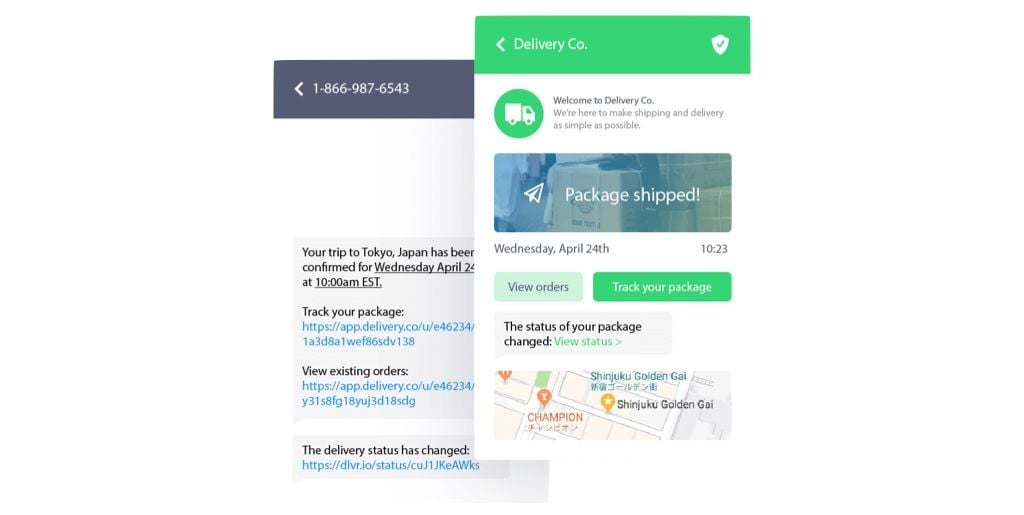
การสนับสนุนจาก GSMA ควรจะเป็นแรงผลักดันที่ยิ่งใหญ่สำหรับความพยายามในการส่งข้อความ RCS เป็นสมาคมที่เป็นตัวแทนผลประโยชน์ของผู้ให้บริการเครือข่ายโทรศัพท์เคลื่อนที่ทั่วโลก มีสมาชิก 800 ราย และสมาชิกสมทบ 300 ราย บนกระดาษ นี่คือองค์กรที่ควรจะทำให้การส่งข้อความ RCS ประสบความสำเร็จ
ผู้ร้ายหลักที่ทำให้การพัฒนาข้อความ RCS ล่าช้าในช่วงเวลานี้คือการเมืองของผู้ให้บริการ แม้ว่าผู้ให้บริการจะสนใจมาตรฐานเพื่อวัตถุประสงค์ในการปกป้องการควบคุมของผู้ให้บริการต่อโครงสร้างพื้นฐานการส่งข้อความ พวกเขาก็ไม่ได้สนใจในการลงทุนเบื้องต้นที่จำเป็นเพื่อสนับสนุนมาตรฐาน โดยเฉพาะเมื่อเครือข่ายที่แข่งขันกันไม่ได้ทำเช่นเดียวกัน
ในปีพ.ศ. 2555 รายได้จาก SMS ทั่วโลกพุ่งสูงสุด ในช่วงเวลาเดียวกันนั้น Google เพิ่งประสบกับความล้มเหลวหลายประการในการส่งข้อความ Google ต้องการที่จะผลักดันการส่งข้อความต่อไป โดยเฉพาะอย่างยิ่งเนื่องมาจากความสำเร็จของ iMessage แต่ก็ต้องการให้ทั้งผู้ให้บริการและ OEM พึงพอใจด้วยเช่นกัน ดังนั้นในปี 2016 Google จึงเข้าร่วมส่งเสริม RCS ให้เป็นมาตรฐานการส่งข้อความของอนาคต
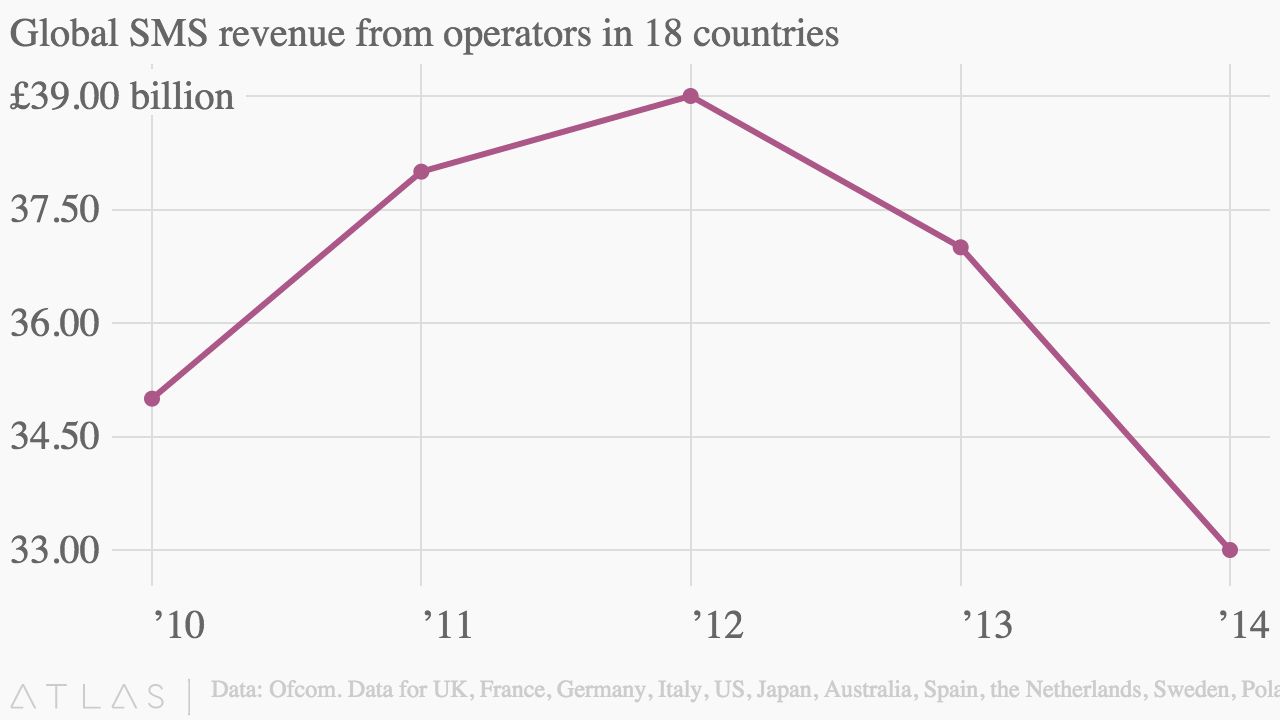
Google ตัดสินใจที่จะมีส่วนร่วมในการพัฒนา เนื่องจากต้องการดำเนินการเปิดตัวระบบส่งข้อความ RCS ด้วยตัวเอง การมีส่วนร่วมของ Google ช่วยจุดประกายการพัฒนา RCS Messaging เป็นอย่างมาก และได้รายงานว่า Google กำลังทำงานร่วมกับผู้ให้บริการโทรศัพท์มือถือรายใหญ่ทุกรายเพื่อนำโปรโตคอลการส่งข้อความ RCS มาใช้
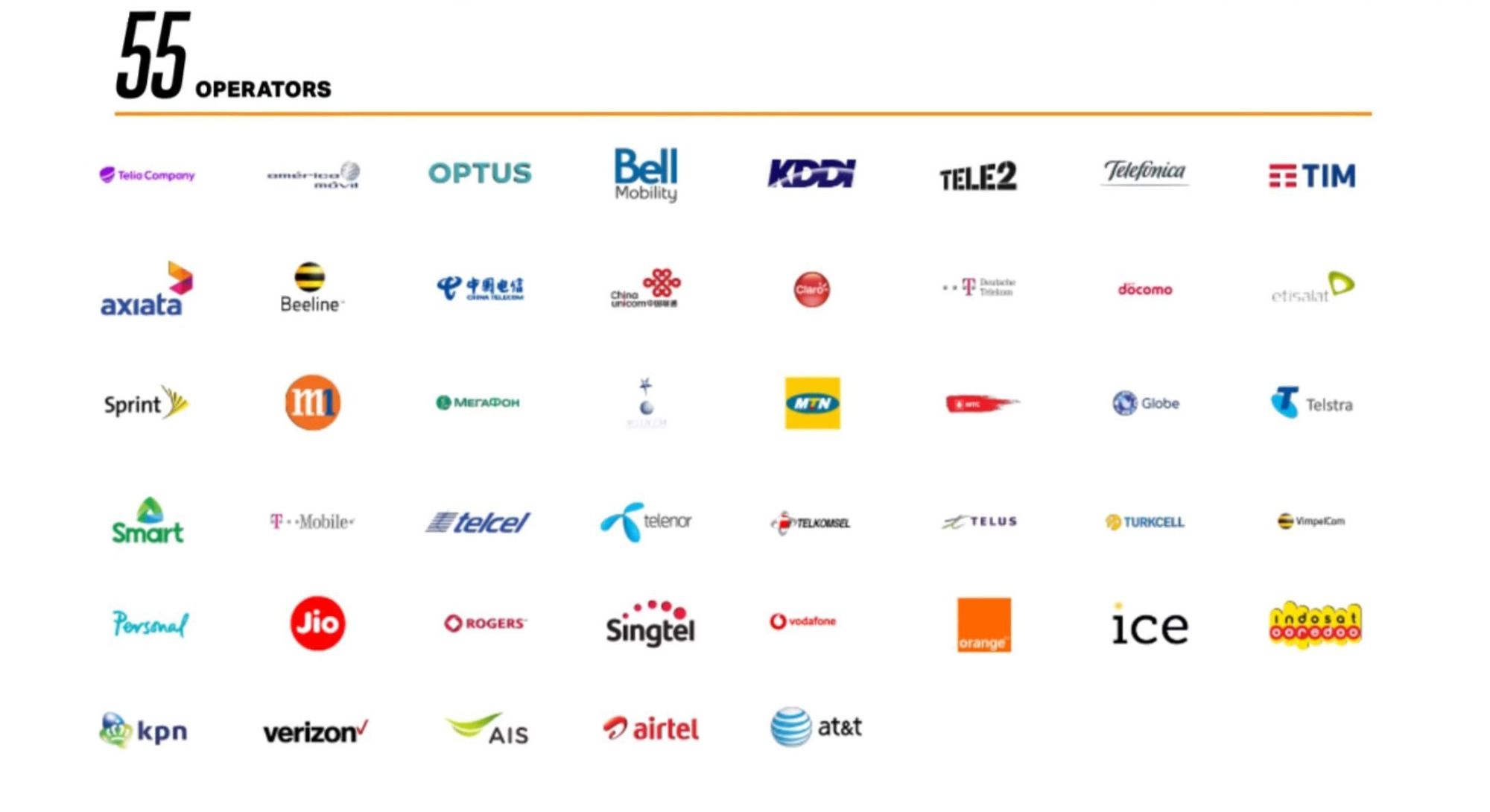
เพื่อสร้างแบรนด์การส่งข้อความ RCS สำหรับผู้บริโภค Google จึงได้ตั้งชื่อโปรโตคอลการส่งข้อความ RCS ว่า Chat อย่างน่าสับสน Chat เป็นแอปที่รวมฟีเจอร์ต่างๆ ที่มีอยู่ในแอปส่งข้อความ เช่น การแชทแบบกลุ่ม ข้อความวิดีโอและเสียง รูปภาพความละเอียดสูง ใบตอบรับการอ่าน ตัวระบุการพิมพ์ การโอนเงิน และการแชร์ตำแหน่ง ทำให้ใกล้เคียงกับ iMessage และแอปแชทอื่นๆ มากขึ้น
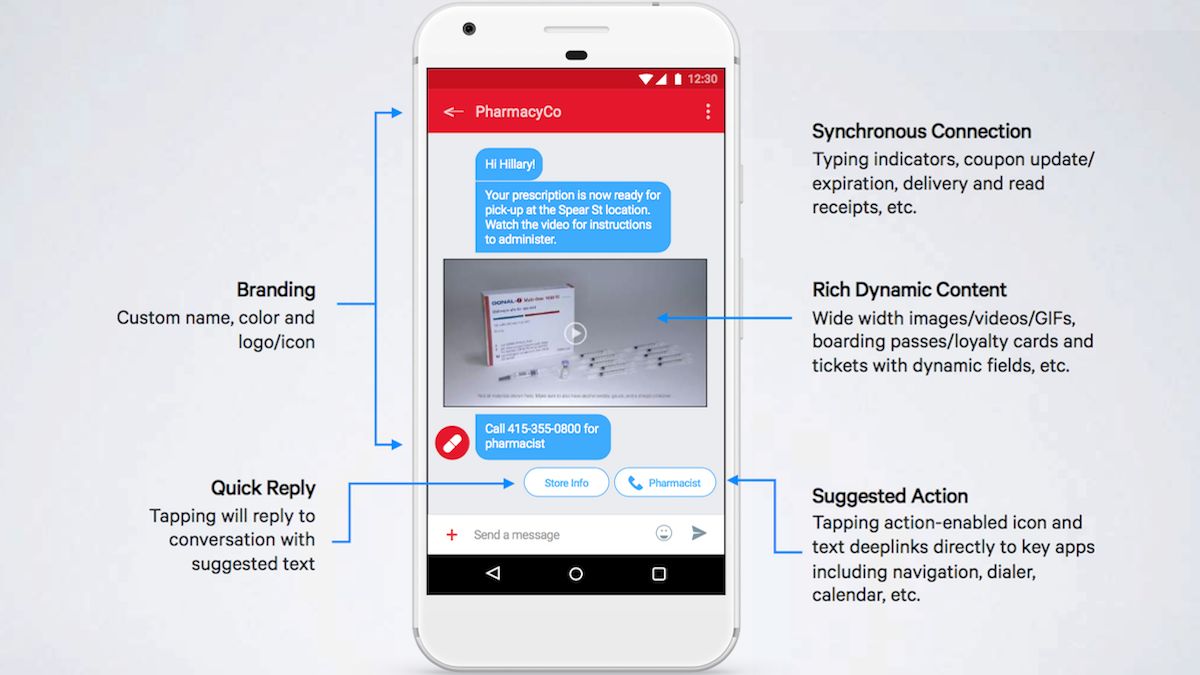
เพื่อให้ RCS Messaging ทำงานได้อย่างเต็มประสิทธิภาพ จำเป็นต้องเปิดใช้งานบนโทรศัพท์ของผู้ใช้ปลายทาง และต้องเปิดใช้งานบนเครือข่ายผู้ให้บริการทั้งผู้ส่งและผู้รับ
แม้ว่าจะไม่มีแอป RCS Messaging โดยเฉพาะ แต่ได้รับการรองรับโดยแอปข้อความเริ่มต้นของ Android อย่างสมบูรณ์ ในปัจจุบัน OEM ของ Android ส่วนใหญ่มาพร้อมกับแอป Messages เป็นแอป SMS เริ่มต้น โดยมี Samsung เป็นข้อยกเว้นที่น่าสังเกต Google เริ่มจัดการกับปัญหานี้ในปี 2018 เมื่อประกาศว่ากำลังทำงานร่วมกับ Samsung เพื่อให้แน่ใจว่าข้อความของ Samsung สามารถรองรับ RCS Messaging ได้ทันที
RCS Messaging ใช้ SMS เป็นวิธีสำรองเพื่อให้แน่ใจว่ามีการส่งข้อความ RCS เมื่อผู้ส่งเริ่มพิมพ์ข้อความ อุปกรณ์ Android จะส่งสัญญาณไปยังผู้รับเพื่อตรวจสอบว่าผู้รับนั้นรองรับการส่งข้อความ RCS หรือไม่ หากผู้ใช้ไม่มีการรองรับการส่งข้อความ RCS ข้อความจะถูกส่งเป็น SMS
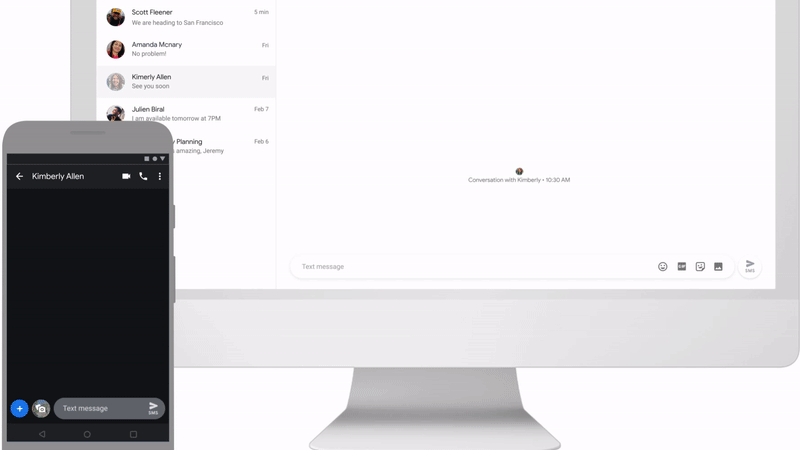
อีกหนึ่งแง่มุมที่สำคัญสำหรับความสำเร็จของโปรโตคอล RCS Messaging คือการทำให้แน่ใจว่าผู้ให้บริการรองรับโปรโตคอลดังกล่าว Google ได้ทำงานร่วมกับผู้ให้บริการ 55 รายเพื่อให้การสนับสนุน RCS Messaging แม้ว่าผู้ให้บริการทั้ง 55 รายจะรองรับ RCS Messaging ในรูปแบบใดรูปแบบหนึ่ง แต่ความท้าทายที่สำคัญที่สุดที่เหลืออยู่คือการทำให้แน่ใจว่าผู้ให้บริการทั้งหมดรองรับมาตรฐาน RCS Messaging ที่อัปเดตล่าสุดที่เรียกว่า Universal Profile
แทนที่จะปล่อยให้ผู้ให้บริการค้นหาวิธีการด้วยตัวเอง Google ได้สร้างโครงสร้างพื้นฐานในฐานะบริษัทผู้ให้บริการเพื่อรองรับการเปิดตัวโปรไฟล์สากล Google ได้ดำเนินการดังกล่าวผ่าน การเข้าซื้อ Jibe Mobileซึ่งเป็นโซลูชันบนคลาวด์สำหรับ RCS Messaging ที่ผู้ให้บริการสามารถนำไปปฏิบัติได้อย่างรวดเร็ว
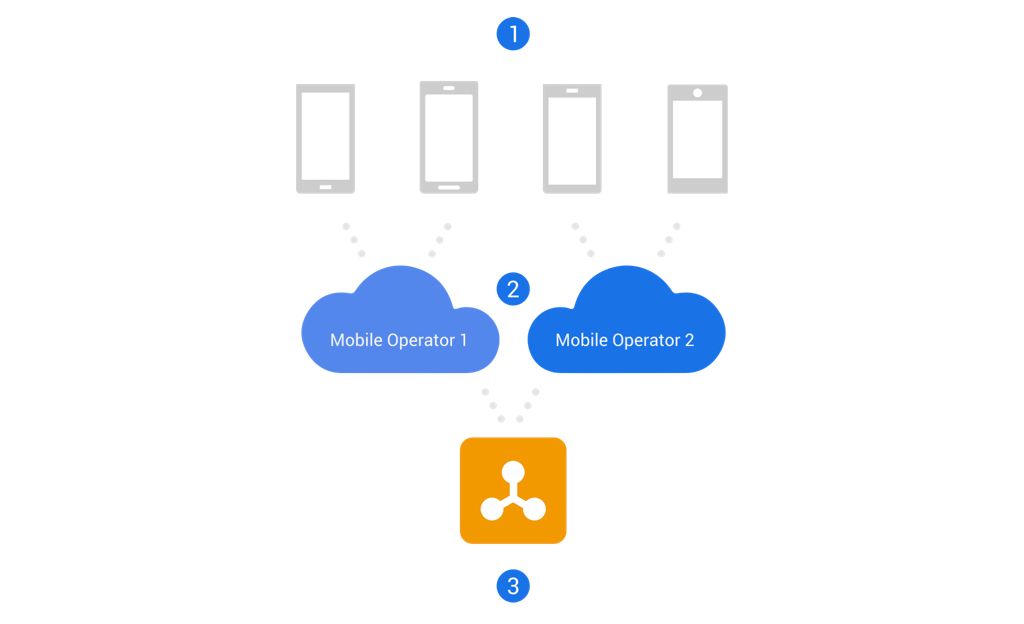
ปัจจุบัน Google กำลังทดสอบบริการ RCS Messaging ในสหราชอาณาจักรและฝรั่งเศส ลูกค้าสามารถเลือกเข้าร่วม RCS Messaging ได้โดยไม่ต้องรอการสนับสนุนจากผู้ให้บริการ เมื่อ Google ทดสอบ RCS Messaging ในสหราชอาณาจักรและฝรั่งเศสสำเร็จแล้ว โทรศัพท์ Android ทั่วโลกก็จะได้รับฟีเจอร์เดียวกันนี้
โปรโตคอล RCS Messaging จะต้องใช้เวลาสักระยะหนึ่งในการพัฒนาให้สมบูรณ์และแพร่หลาย ซึ่งอาจต้องใช้เวลาสักระยะหนึ่ง โปรโตคอลการส่งข้อความ RCS แตกต่างจาก iMessage ที่ประสบความสำเร็จอย่างสูง โดยจะเชื่อมโยงการสื่อสารกับหมายเลขโทรศัพท์และขึ้นอยู่กับผู้ให้บริการในการส่งข้อความ โปรโตคอลการส่งข้อความ RCS ได้รับการออกแบบเพื่อให้ไม่มีบริษัทใดสามารถควบคุมระบบทั้งหมดได้ นี่เป็นสิ่งที่ขัดขวางการเปิดตัวและการเติบโตของความนิยมทั่วโลก
อาจดูเหมือนว่า RCS Messaging จะต้องมีการพัฒนาอีกยาวไกล แต่ Google ก็เร่งเวลาให้เร็วขึ้นด้วยการทำให้ RCS Messaging กลายเป็นโซลูชันการแชททางธุรกิจที่สมบูรณ์แบบ
Google มอบคุณลักษณะเดียวกับที่ธุรกิจคาดหวังด้วยการส่งข้อความ SMS นั่นคือ การเข้าถึงที่กว้างขวาง และการส่งมอบที่เชื่อถือได้ ในขณะที่ส่งมอบคุณสมบัติ UI แบบเดียวกัน ผู้ใช้ปลายทางก็มีความคาดหวังในแอปการส่งข้อความมากขึ้น
หากคุณกำลังมองหาความสามารถในการเข้าถึงและส่งมอบ SMS คือโซลูชันที่ดีที่สุด มันง่ายมาก แค่เอารายชื่อลูกค้าอัปโหลดไปที่เครื่องมือ SMS broadcasting และส่งออกสิ่งต่างๆ เช่น การตรวจสอบความปลอดภัยแบบสองขั้นตอน (Two-Factor Authentication) และการแจ้งเตือนอื่นๆ เนื่องจากโทรศัพท์ทุกเครื่องรองรับ SMS การจัดส่งจึงมีการรับประกัน
อย่างไรก็ตาม ฟังก์ชัน SMS ยังขาดอยู่มาก สิ่งต่างๆ เช่น การส่งรูปภาพและวิดีโอถือเป็นคุณสมบัติที่สำคัญต่อผู้ใช้ปลายทาง แต่ไม่สามารถทำได้เสมอไปด้วย SMS สิ่งหนึ่งที่น่าดึงดูดใจสำหรับบริษัทต่างๆ ในการใช้ RCS Messaging ก็คือ UI ที่มีให้เลือกมากมายซึ่งตอบสนองความคาดหวังของผู้ใช้ปลายทางได้
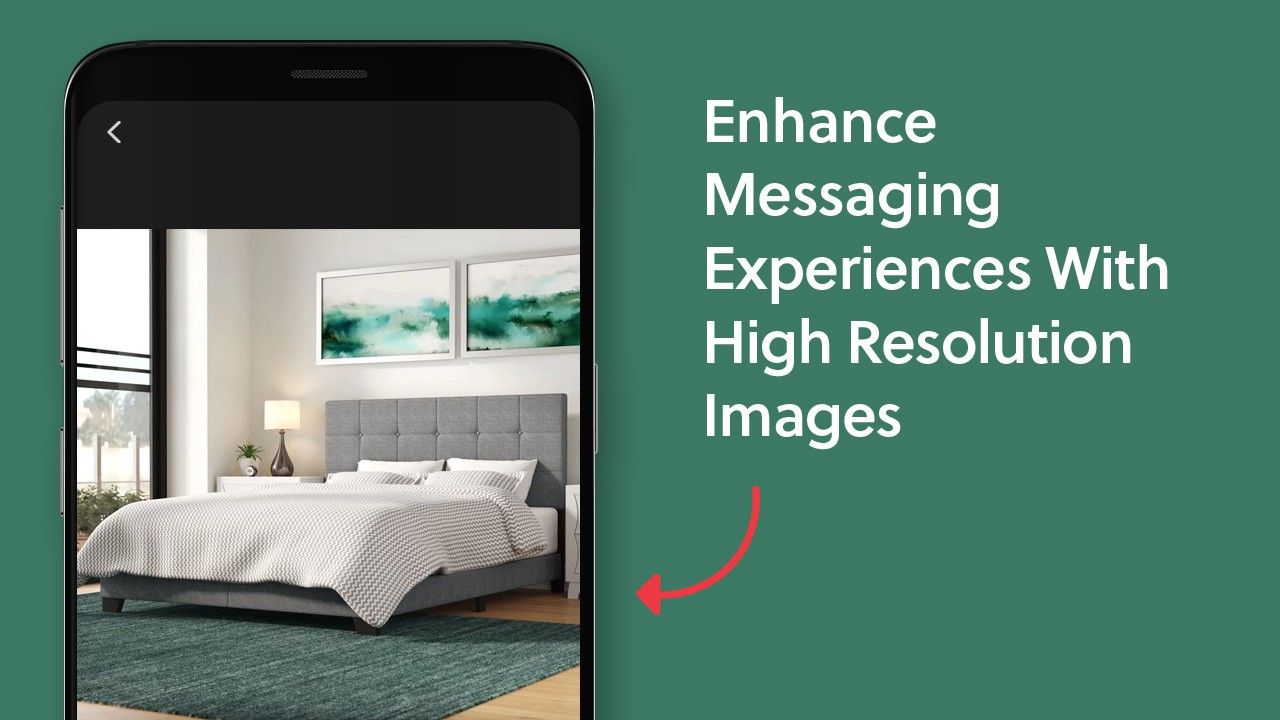
RCS Messaging ถูกสร้างขึ้นมาจากพื้นฐานเพื่อให้ธุรกิจต่างๆ สามารถส่งรูปภาพและวิดีโอคุณภาพสูงให้กับลูกค้าได้ กำจัดปัญหาการกระจายตัวของข้อมูลแบบสมบูรณ์ที่ SMS มักพบเมื่อทำงานกับโปรโตคอลการส่งข้อความมัลติมีเดียเฉพาะของผู้ให้บริการ (เอ็มเอ็มเอส)
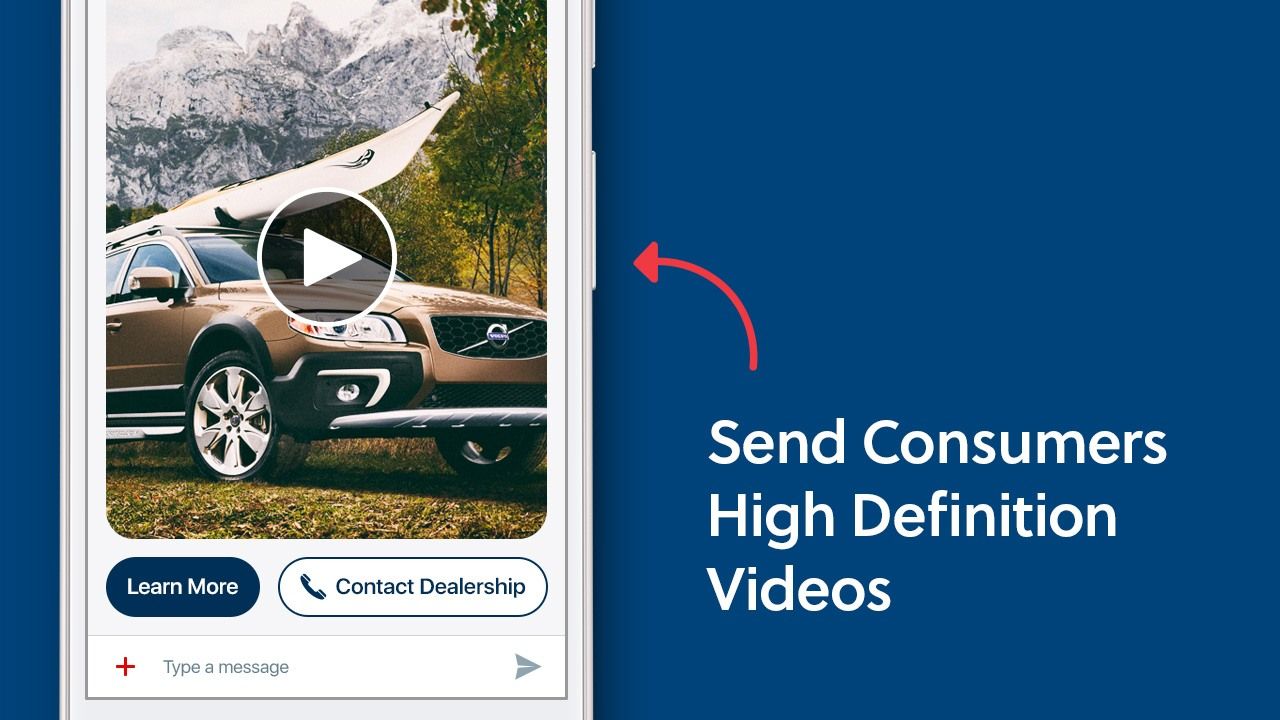
RCS Messaging ยังดีกว่าสำหรับการให้การสนับสนุนแบบแชทสดด้วยเช่นกัน แม้ว่า SMS จะมีใบเสร็จการจัดส่งแล้ว แต่ RCS Messaging ก็ได้ยกระดับไปอีกขั้นด้วยตัวระบุการพิมพ์ แจ้งให้เจ้าหน้าที่บริการลูกค้าทราบว่าจะมีบริการเพิ่มเติมอีก
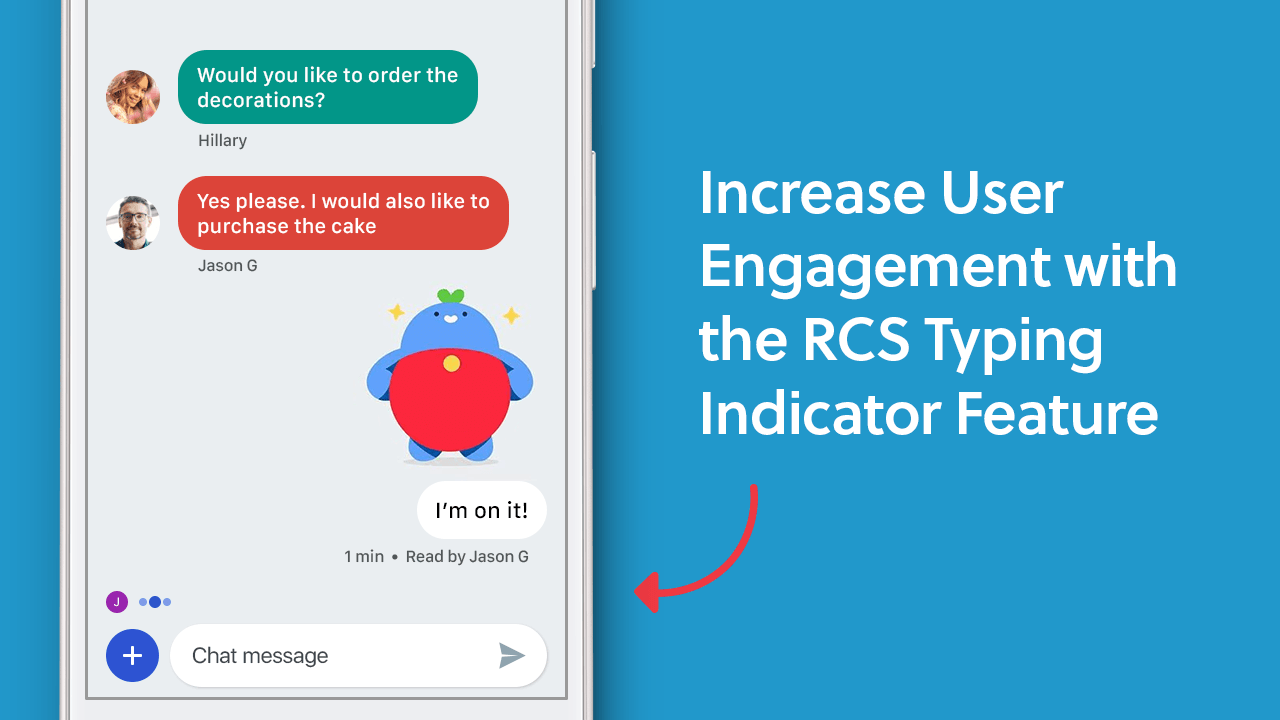
ข้อได้เปรียบที่แอปการส่งข้อความมีเหนือ SMS คือสามารถรองรับเทมเพลตตามกรณีการใช้งานที่สามารถส่งมอบข้อมูลในรูปแบบที่เหมาะสมที่สุดได้
โชคดีที่ RCS Messaging ได้นำเทมเพลต UI ตามกรณีการใช้งานมาใช้ ซึ่งช่วยให้ธุรกิจต่างๆ สามารถส่งมอบข้อมูลในรูปแบบที่เหมาะสมที่สุดกับกรณีการใช้งาน
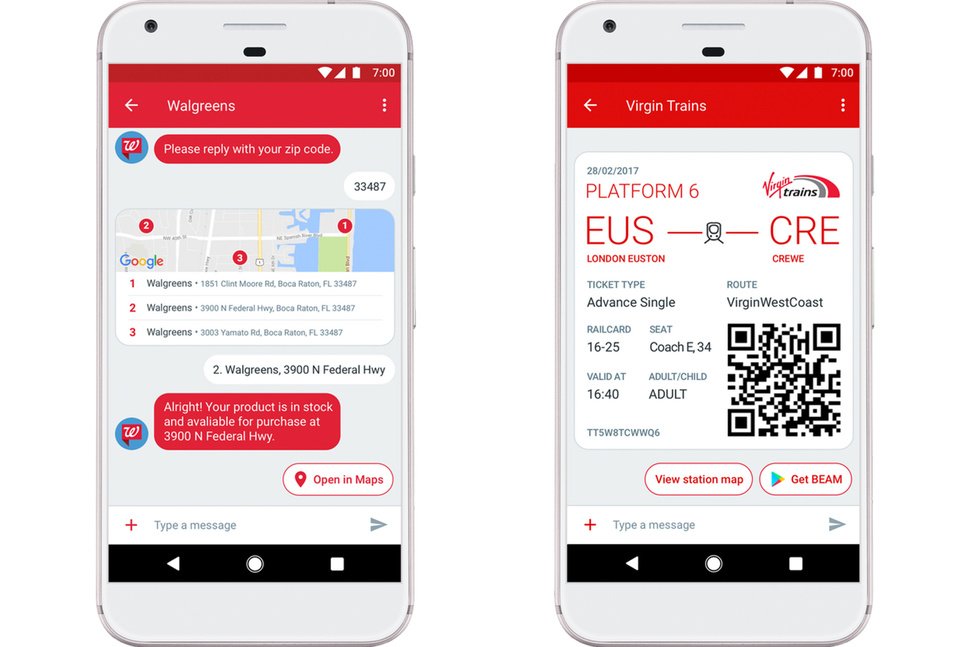
สุดท้ายแต่ไม่ท้ายสุด หนึ่งในฟีเจอร์ที่ดีที่สุดของ RCS Messaging สำหรับธุรกิจคือความสามารถในการสร้างแบรนด์ในแชท ต่างจาก SMS ที่ไม่สามารถแสดงชื่อแบรนด์'ได้ เว้นแต่คุณจะเพิ่มพวกเขาเป็นผู้ติดต่อ RCS Messaging จะแสดงชื่อแบรนด์บริษัทตามค่าเริ่มต้น RCS Messaging ช่วยให้คุณสามารถเปลี่ยนสีของอินเทอร์เฟซการแชทตามสีของแบรนด์ของคุณได้ด้วย
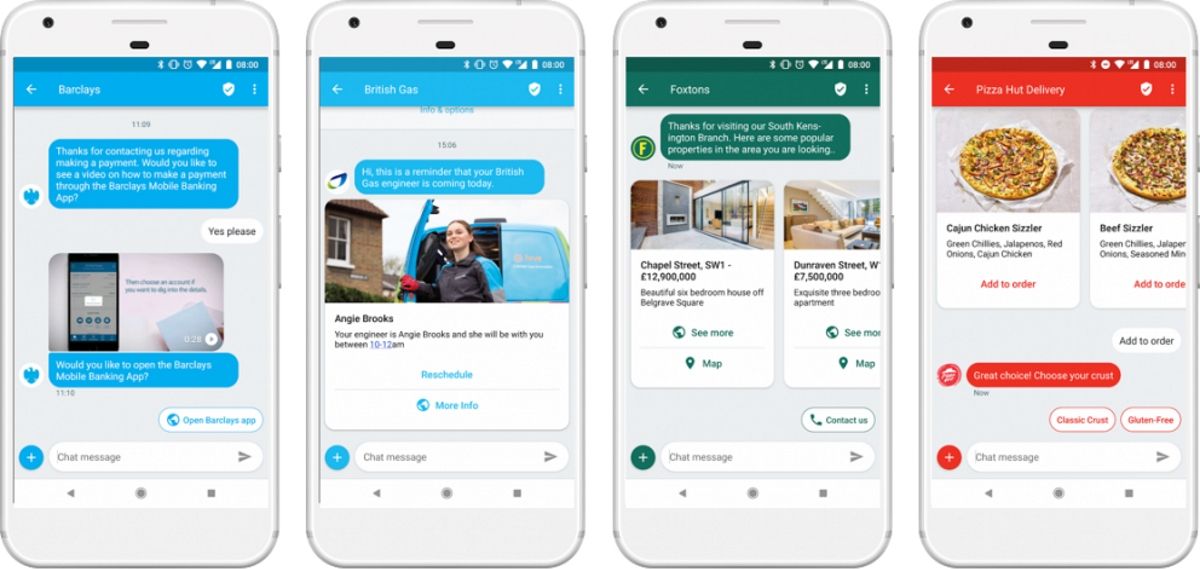
คุณสมบัติการสร้างแบรนด์บัญชีธุรกิจทำให้ RCS Messaging ก้าวไปอีกขั้นจากที่แอป Messaging สามารถมอบให้ได้ แม้ว่าแอปการส่งข้อความจะอนุญาตให้บริษัทต่างๆ ใช้ชื่อแบรนด์ของตนในการแชทได้ แต่ตอนนี้แอปดังกล่าวก็อนุญาตให้ธุรกิจต่างๆ เปลี่ยนสีของ UI การแชทได้ ซึ่งถือเป็นเอกลักษณ์เฉพาะของ RCS Messaging
การใช้บัญชีธุรกิจแอปการส่งข้อความผ่าน SMS มีประโยชน์มากมาย บน Facebook Messenger บริษัทต่างๆ สามารถใช้ คลิกเพื่อแชทโฆษณา หรือ เพื่อแปลงผู้เยี่ยมชมเว็บไซต์เป็นการเชื่อมต่อการส่งข้อความบนเพจ Facebook มีข้อดีเพิ่มเติมอีกด้วย เนื่องจากแอปส่งข้อความส่วนใหญ่ไม่เรียกเก็บค่าธรรมเนียมในการส่งข้อความไปมาระหว่างลูกค้า จึงมีต้นทุนที่ถูกกว่าการส่ง SMS อย่างไรก็ตาม เช่นเดียวกับเครื่องมือทางธุรกิจอื่นๆ ก็มีข้อเสียเช่นกัน
เมื่อเปรียบเทียบกับ SMS ผู้ชมในแอปส่งข้อความจะแยกส่วนกัน มีแอปส่งข้อความยอดนิยมอยู่ประมาณเจ็ดแอปทั่วโลก โดยมีสามแอปที่ครองส่วนแบ่งการตลาดมากที่สุด ซึ่งทำให้ธุรกิจต่างๆ ยากที่จะค้นหาลูกค้าทั้งหมดได้ในที่เดียว
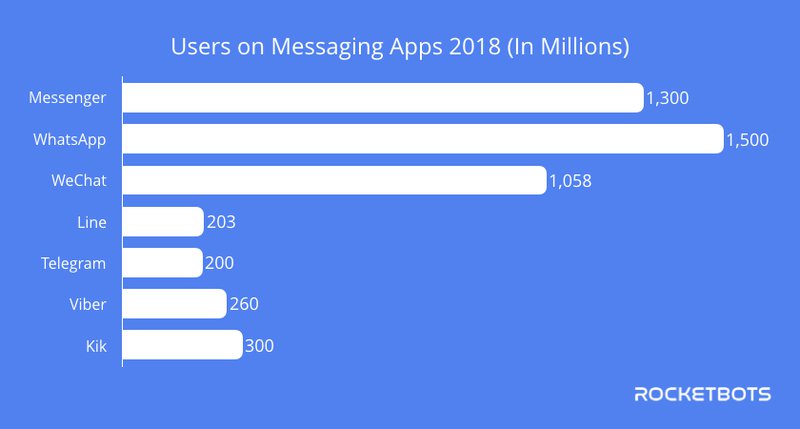
ปัญหาอีกประการหนึ่งของแอปส่งข้อความคือโดยทั่วไปธุรกิจไม่สามารถส่งข้อความแรกได้ นี่ไม่เหมือน SMS ซึ่งคุณสามารถส่งข้อความแรกได้หากคุณมีหมายเลข RCS Messaging อาจเป็นช่องทางที่ผสมผสานทั้งความสามารถในการเข้าถึงและส่งมอบ SMS พร้อมทั้งมอบ UI ที่มีคุณค่าที่ผู้ใช้คาดหวังจากแอปการส่งข้อความหรือไม่
โดยสรุป ด้วยความช่วยเหลือของ Google', RCS Messaging จะสามารถกลายเป็นช่องทางการสื่อสารที่ครอบคลุมตั้งแต่ธุรกิจไปจนถึงผู้บริโภคได้ หาก Google สามารถทำให้ผู้ให้บริการทั้งหมดใช้ RCS Messaging Protocol ที่มีมาตรฐานเดียวกันได้
ด้วยการสนับสนุนสากล RCS Messaging จะให้ประโยชน์ของ SMS ซึ่งหมายความว่าธุรกิจต่างๆ จะสามารถส่งข้อความแรกและมั่นใจได้ว่าลูกค้าทั้งหมดจะพร้อมใช้งานบนแพลตฟอร์มเดียวกัน ในเวลาเดียวกัน ด้วยฟีเจอร์ UI ที่มีอยู่ใน RCS Messaging ผู้ใช้ปลายทางก็จะมีฟีเจอร์ที่คุ้นเคยในแอป Messaging เช่นกัน
เช่นเดียวกับผลิตภัณฑ์ที่จะเปิดตัวในอนาคต ก็มีผู้ที่รับเอาโปรโตคอลนี้เป็นกลุ่มแรกๆ บริษัทต่างๆ เช่น 1-800 Flowers ซึ่งเป็นผู้บุกเบิกการใช้ Facebook Messenger และ WhatsApp Business API ถือเป็นบริษัทแรกๆ ที่ดำเนินการดังกล่าว
1-800-Flowers ค้าปลีกและจัดจำหน่ายดอกไม้และอาหารรสเลิศ เป็นหนึ่งในธุรกิจแรกๆ ที่จะบูรณาการ RCS Business Messaging ด้วยเทมเพลตและองค์ประกอบ UI ที่พร้อมใช้งานกับโปรโตคอล 1-800-Flowers ได้สร้างแถบเลื่อนและกล่องโต้ตอบการจองแบบเดียวกับที่พวกเขาสร้างไว้ใน Facebook Messenger แล้ว วิธีนี้ช่วยให้ลูกค้าสามารถค้นหาผลิตภัณฑ์ เลือกรายการเสริมเพิ่มเติม และชำระเงินได้ โดยไม่ต้องไปที่เว็บไซต์หรือดาวน์โหลดแอปส่งข้อความเลย
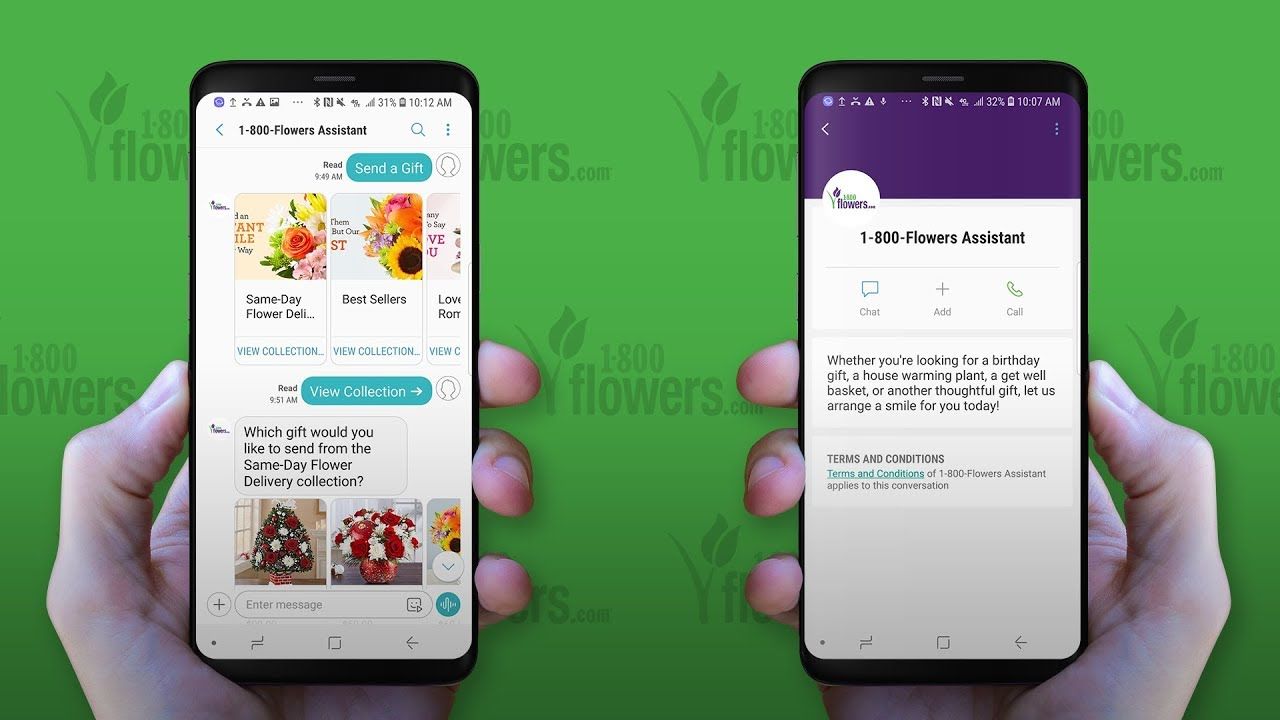
ตัวอย่างทางธุรกิจอีกกรณีหนึ่งมาจากบริษัทโทรคมนาคมของเม็กซิโกชื่อ Total Play ซึ่งให้บริการโทรทัศน์แบบสมัครสมาชิก โทรศัพท์พื้นฐาน การเชื่อมต่ออินเทอร์เน็ตด้วยไฟเบอร์ออปติก และข้อมูลโทรศัพท์มือถือ พวกเขาเริ่มนำระบบส่งข้อความ RCS มาใช้ เนื่องจากประสบปัญหาในการเรียกเก็บเงินไม่ว่าจะใกล้ถึงกำหนดชำระหรือเลยกำหนดชำระแล้วก็ตาม โดยปกติแล้ว Total Play จะส่งข้อความถึงผู้ใช้แต่ละคนเพื่อเตือนยอดคงเหลือและการชำระเงิน พวกเขาพบว่า SMS มีส่วนร่วมต่ำ และหากไม่มีใบตอบรับการอ่าน ก็ไม่มีทางทราบได้ว่าลูกค้าของพวกเขาได้รับและอ่านข้อความแล้วหรือไม่

พวกเขาสามารถส่งการแจ้งเตือนรายเดือนซึ่งรวมถึงยอดคงเหลือและวันครบกำหนด และลูกค้าสามารถดำเนินการได้ทันทีในแอปข้อความ การส่งข้อความของ RCS ช่วยให้ลูกค้าของ Total Play สามารถเพิ่มบัตรเดบิต/บัตรเครดิตสำหรับการชำระเงินอัตโนมัติ ถูกส่งต่อไปยังเว็บเพจการชำระเงิน ขอข้อมูลบัญชีและยอดคงเหลือ รวมถึงติดต่อตัวแทนฝ่ายลูกค้าผ่านทางโทรศัพท์หรือแชท โซลูชั่นนี้มีประสิทธิภาพสำหรับ Total Play เนื่องจากสามารถเพิ่มการตอบสนองและปรับปรุงการสนับสนุนลูกค้าได้ อัตราการตอบสนองของพวกเขาเพิ่มขึ้นถึง 78% และการชำระเงินตรงเวลาเพิ่มขึ้นถึง 65%
RCS Messaging จะประสบความสำเร็จได้ก็ต่อเมื่อ Google และพันธมิตรผู้ให้บริการสามารถนำโปรไฟล์สากลของ RCS Messaging ไปใช้งานทั่วโลกได้ และสร้างกลุ่มเป้าหมายแบบครบวงจรเพียงกลุ่มเดียวเพื่อให้บริษัทต่างๆ เข้าถึงได้ ก่อนที่โปรโตคอลจะบรรลุภารกิจนี้ได้ จะมีปัญหาบางประการที่ต้องแก้ไข โปรโตคอลจะต้องจัดการกับปัญหาต่างๆ เช่น การเข้ารหัสแบบครบวงจร การสนับสนุนของผู้ให้บริการ การนำไปใช้ในธุรกิจ และการใช้งานของผู้ใช้
การเข้ารหัสแบบ End-to-end เป็นสิ่งสำคัญสำหรับผู้ใช้ และแอปพลิเคชันแชทหลักๆ ส่วนใหญ่เช่น iMessage และ WhatsApp ก็มีการเข้ารหัสแบบ End-to-end เช่นกัน Google อ้างว่าพวกเขากำลังดำเนินการแชทส่วนตัวบนโปรโตคอลการส่งข้อความ RCS และกล่าวว่าพวกเขาจะไม่เก็บข้อความขณะที่ส่งผ่านเซิร์ฟเวอร์และจะลบข้อความที่ค้างอยู่ในคิว
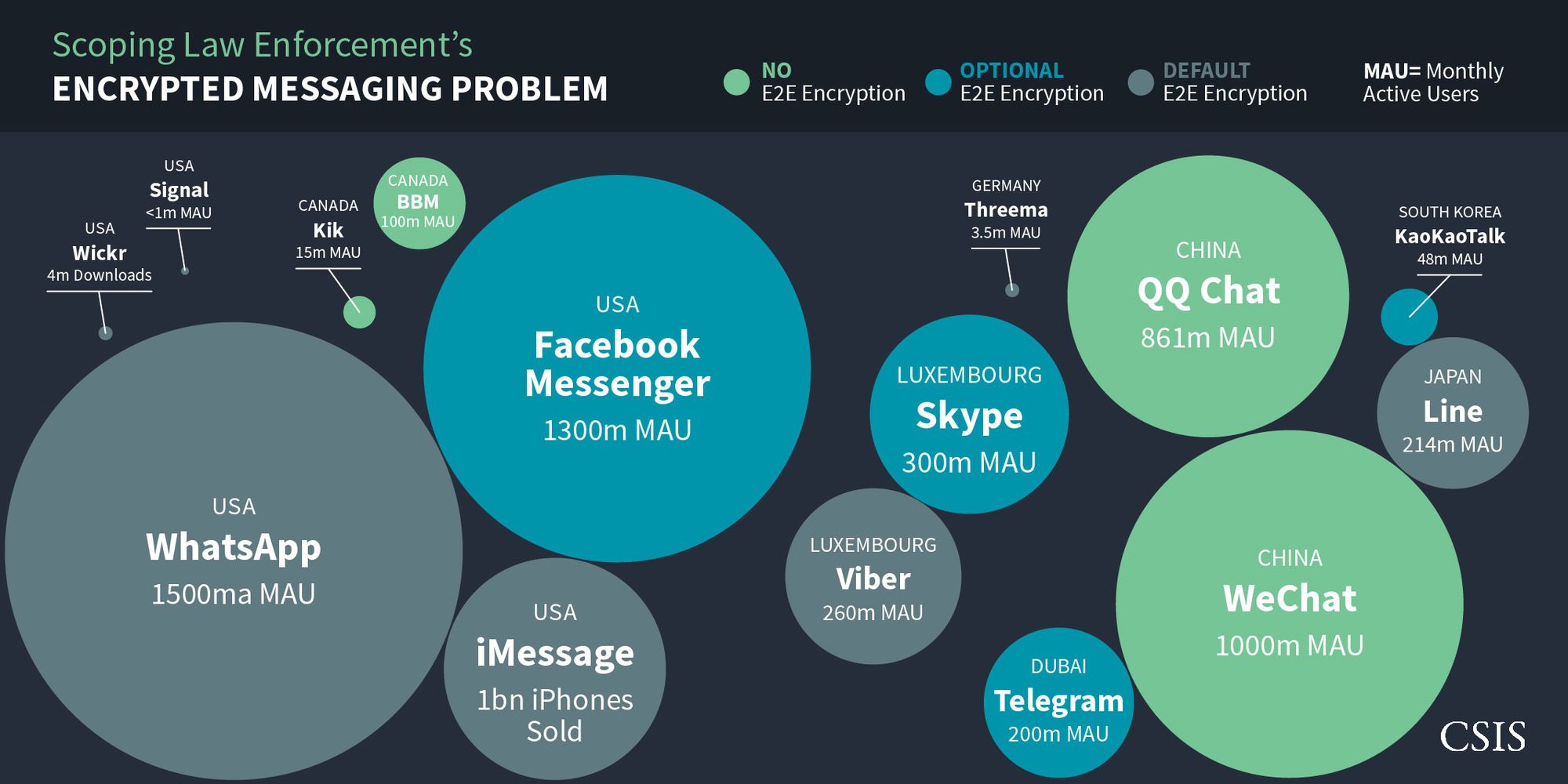
อย่างไรก็ตาม เรื่องนี้เป็นประเด็นที่ถกเถียงกันมาก เนื่องจาก RCS Messaging ไม่ได้เข้ารหัสแบบ end-to-end ข้อความที่ถูกส่งและรับเหล่านี้จะย้ายในรูปแบบเข้ารหัสจนกระทั่งถูกส่งไปยังเซิร์ฟเวอร์ของผู้ให้บริการ
ปัญหาอีกประการหนึ่งที่ผู้ให้บริการคือการนำมาใช้ แม้ว่าหลายๆ คนจะได้นำมาตรฐาน RCS Messaging มาใช้ แต่ไม่ใช่ทุกคนจะนำโปรไฟล์สากลที่จำเป็นสำหรับการรองรับ RCS ในปัจจุบันมาใช้ ซึ่งหมายความว่าข้อความอาจมาถึงในรูปแบบ RCS หรือกลับเป็น SMS ตามมาตรฐานก็ได้
สิ่งนี้จะซับซ้อนยิ่งขึ้นเมื่อผู้ให้บริการเลือกสนับสนุนการส่งข้อความ RCS อย่างเฉพาะเจาะจง T-mobile RCS Messaging รองรับโทรศัพท์ส่วนใหญ่ ยกเว้น Pixel 3A ซึ่งแปลกประหลาดก็คือโทรศัพท์ของ Google
คำถามที่ใหญ่ที่สุดในการนำ RCS Messaging มาใช้ของผู้ใช้คือเหตุใดผู้ใช้ปลายทางจึงเปลี่ยนมาใช้ RCS ในตอนแรก ปัจจัยที่สำคัญที่สุดสำหรับความสำเร็จของแพลตฟอร์มโซเชียล ไม่ว่าจะเป็นแบบเปิดหรือแบบปิด ก็คือปฏิสัมพันธ์ทางสังคม หากผู้ใช้ปลายทางต้องการผลักดันการนำ RCS มาใช้ จะต้องเสนอสิ่งที่ไม่มีอยู่ในแพลตฟอร์มอื่นในปัจจุบัน
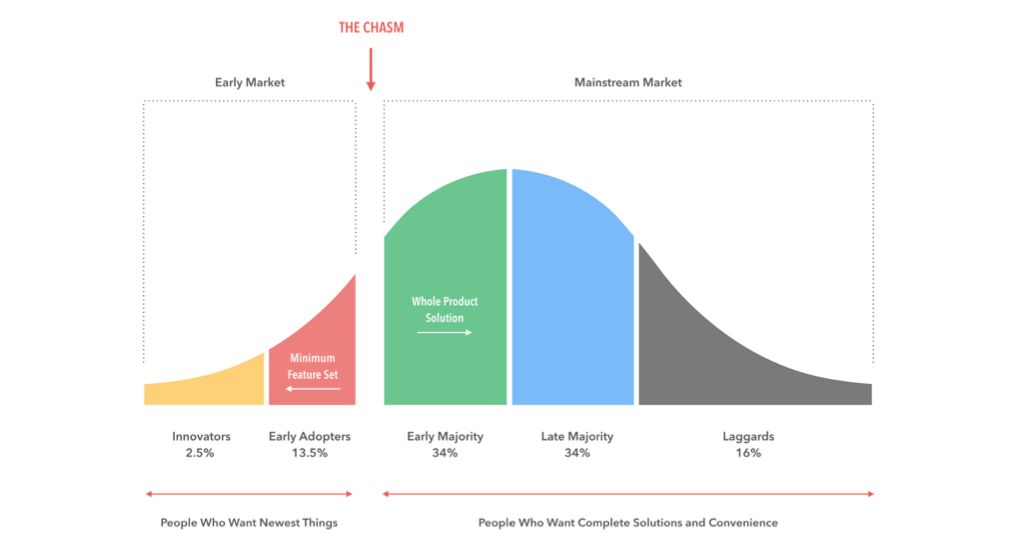
กับแพลตฟอร์มโซเชียลที่มีการตรวจสอบความปลอดภัยเพิ่มขึ้น RCS ดูเหมือนจะไม่มีคำตอบ โดยมีแพลตฟอร์มที่มีอยู่เช่น iMessage เสนอการเข้ารหัส E2E Apple สามารถรักษาภาพลักษณ์ที่ให้ความสำคัญกับความเป็นส่วนตัวเป็นอันดับแรกได้ และ WhatsApp ก็ทำได้เช่นกัน คงเป็นเรื่องยากที่จะจินตนาการถึงโลกที่ผู้ใช้เปลี่ยนมาใช้ RCS เนื่องด้วยปัญหาความเป็นส่วนตัว
คุณสมบัติอาจเป็นเหตุผลที่ทำให้มีการเปลี่ยนแปลง แต่หากเราพิจารณาถึงโลกของแอปการส่งข้อความ เราจะเห็นว่าเป็นเรื่องยากมากที่จะสร้างส่วนแบ่งการตลาดโดยอาศัยคุณสมบัติเพียงอย่างเดียว เคสที่ประสบความสำเร็จมากที่สุดคือ LINE ด้วยการมุ่งเน้นเฉพาะตลาดหลัก ได้แก่ อินโดนีเซีย ไทย ไต้หวัน และญี่ปุ่น พวกเขาจึงออกแบบแอปพลิเคชันแชทที่เหมาะกับตลาดในท้องถิ่น
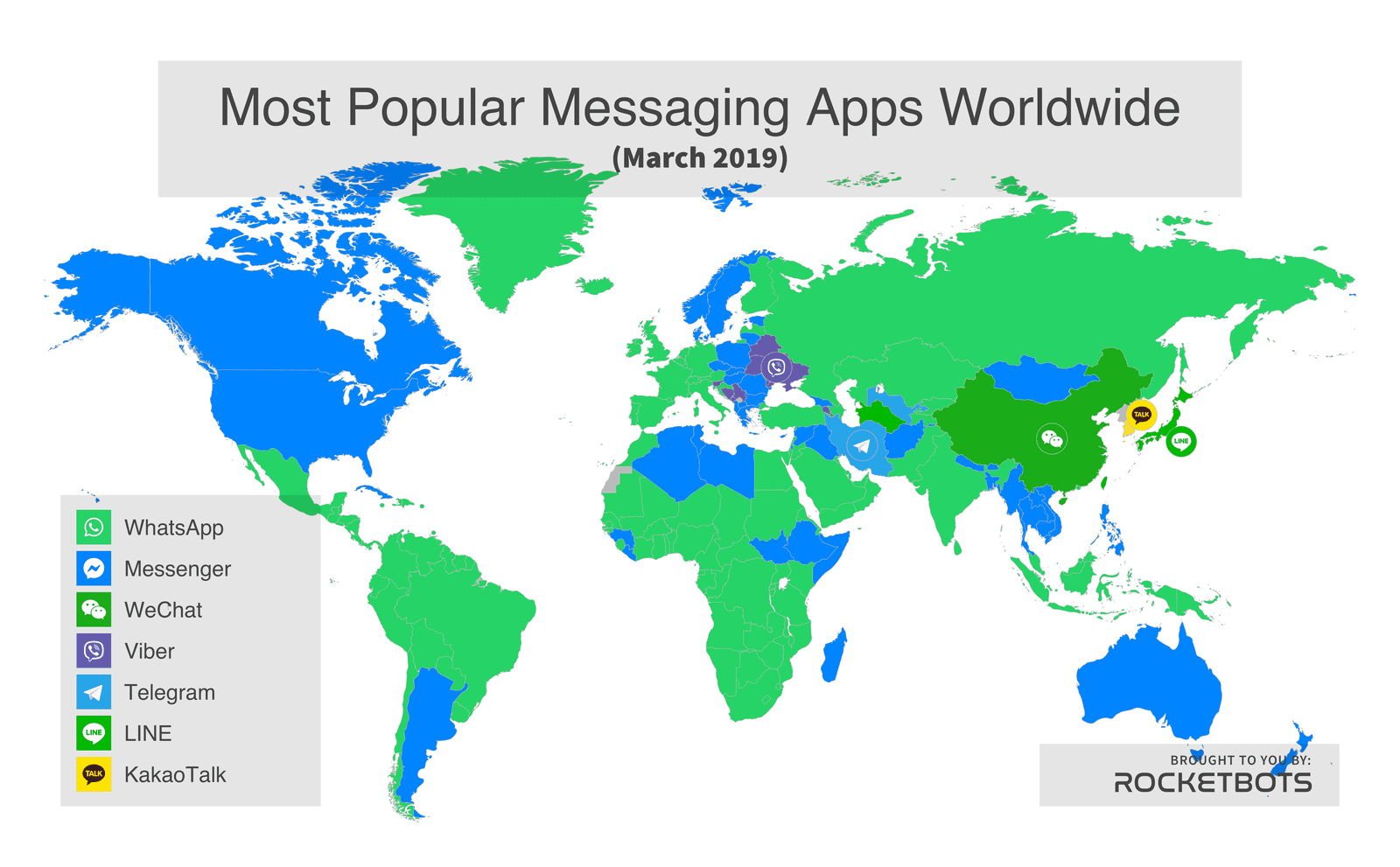
จากสิ่งที่เราได้เห็นมาจนถึงตอนนี้ เราคิดว่าไม่น่าเป็นไปได้ที่ผู้ใช้จะขับเคลื่อนความนิยมของโปรโตคอล RCS Messaging ได้
จากมุมมองของเรา ดูเหมือนว่าความสำเร็จหรือความล้มเหลวของโปรโตคอล RCS Messaging จะขึ้นอยู่กับการนำไปใช้ในเชิงธุรกิจ RCS Messaging กำลังจะกลายเป็นแอปการส่งข้อความที่ดีที่สุดสำหรับธุรกิจ มีคุณลักษณะสำคัญ 4 ประการที่แอปส่งข้อความหรือ SMS ไม่สามารถมีได้ด้วยตัวเอง
ความสามารถในการเข้าถึง แตกต่างจากแอปส่งข้อความ ด้วยเพียงแค่หมายเลขโทรศัพท์ ธุรกิจต่างๆ ก็สามารถส่งข้อความแรกถึงลูกค้าได้
การแตกกระจาย ไม่น่าเป็นไปได้เลยที่คุณ'จะสามารถเข้าถึงลูกค้าทั้งหมดได้ด้วยแอปการส่งข้อความเพียงแอปเดียว การใช้หมายเลขโทรศัพท์และทำงานในลักษณะเดียวกับ SMS ทำให้ RCS มีความสามารถที่จะทำให้ธุรกิจสามารถเข้าถึงบุคคลใดก็ได้ในโลก
ประสบการณ์ผู้ใช้ RCS มอบ UI ที่มีฟังก์ชันครบครันที่ธุรกิจต่างๆ ต้องการสำหรับการส่งมอบข้อมูลในรูปแบบที่กะทัดรัดและอ่านง่าย เช่น รายการ แถบเลื่อน เทมเพลตตามกรณีการใช้งาน และการตอบกลับอย่างรวดเร็ว
การสร้างแบรนด์บัญชีธุรกิจ ไม่มีทางเลือกอื่นใดที่จะมอบการสร้างแบรนด์ธุรกิจในระดับที่ RCS ทำได้ การอนุญาตให้ธุรกิจใช้สีและโลโก้ของตนในการแชทจะทำให้ CMO ทั่วโลกยิ้มได้อย่างแน่นอน
เปลี่ยนการสนทนากับลูกค้าให้เป็นการเติบโตทางธุรกิจด้วย respond.io. ✨
จัดการการโทร การแชท และอีเมลในที่เดียว!
หากคุณสนุกกับการอ่านบทความนี้และอยากเรียนรู้เพิ่มเติมเกี่ยวกับการส่งข้อความทางธุรกิจ เราขอแนะนำให้คุณอ่าน คู่มือฉบับสมบูรณ์เกี่ยวกับแอปการส่งข้อความสำหรับธุรกิจ
Iaroslav Kudritskiy เป็นประธานเจ้าหน้าที่ฝ่ายปฏิบัติการและผู้ร่วมก่อตั้งของ respond.io โดยทำหน้าที่กำกับดูแลการเติบโตและการดำเนินงาน เขาสำเร็จการศึกษาจากหลักสูตร MBA จากมหาวิทยาลัยจีนแห่งฮ่องกง และเคยดำรงตำแหน่งที่ Kodak Alaris, Xaxis และ Light Reaction

ธุรกิจไม่สามารถส่งข้อความ WhatsApp ได้หลังจาก 24 ชั่วโมง เว้นแต่จะใช้เทมเพลตข้อความ WhatsApp เรียนรู้วิธีการจัดรูปแบบและส่งข้อความเทมเพลตพร้อมตัวอย่าง
